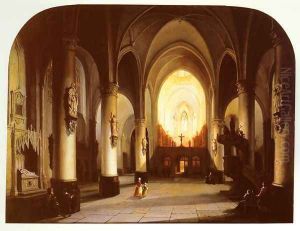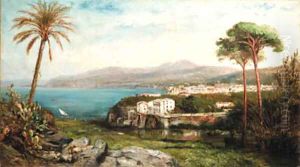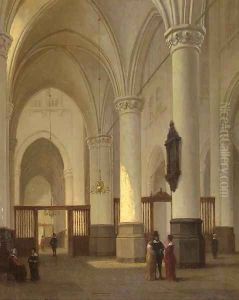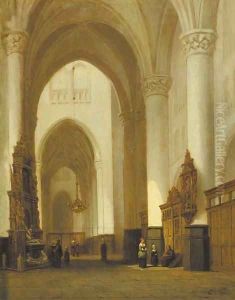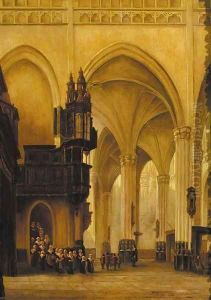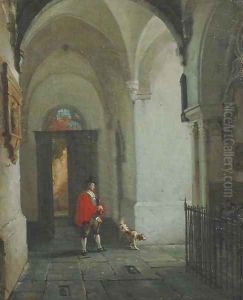Jan-Baptiste Tetar van Elven Paintings
Jan-Baptiste Tetar van Elven was a Dutch-born artist primarily known for his work in France during the 19th century. Born on March 13, 1805, in Amsterdam, Netherlands, Tetar van Elven came into the world during a period of significant artistic and cultural transformation. From a young age, he was drawn to the arts, and his initial education and exposure in the Netherlands set the stage for his later career.
In pursuit of expanding his artistic horizons, Tetar van Elven moved to Paris, France, which was then the epicenter of the art world. Paris in the 19th century was a hub for artists, intellectuals, and revolutionaries, and it offered an environment rich with opportunities for creative growth and exchange. There, he refined his skills and began to make a name for himself in the local art scene. His work largely consisted of portraits and genre scenes, which were popular during that time. He also had a penchant for historical painting, which resonated with the Romantic sensibilities of the era.
Throughout his career, Tetar van Elven exhibited at the prestigious Paris Salon, an official art exhibition of the Académie des Beaux-Arts in Paris. Exhibiting at the Salon was a significant achievement for any artist of the time, as it provided critical exposure and the opportunity to sell work to affluent patrons. His paintings were well-received, and he gained a reputation for his attention to detail and ability to capture the essence of his subjects.
Apart from his artistic contributions, Tetar van Elven was also involved in cultural circles, associating with notable figures of the time. His connections and reputation helped him secure commissions and further his career. Despite the political and social upheavals that occurred in France during his lifetime, including the revolutions of 1830 and 1848, Tetar van Elven continued to work and adapt to the changing art market.
Jan-Baptiste Tetar van Elven's death on October 28, 1889, marked the end of a long and productive career. He left behind a legacy of work that is characteristic of the 19th-century French art scene, capturing the spirit and culture of his adopted country. While he may not be as widely known as some of his contemporaries, his contributions to the art world during his time were significant, and his works continue to be appreciated by art historians and collectors today.
